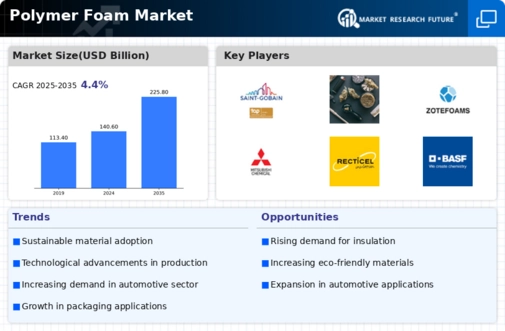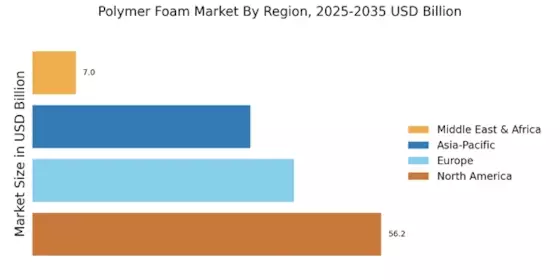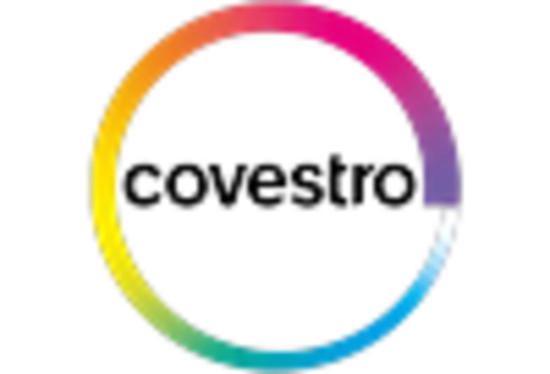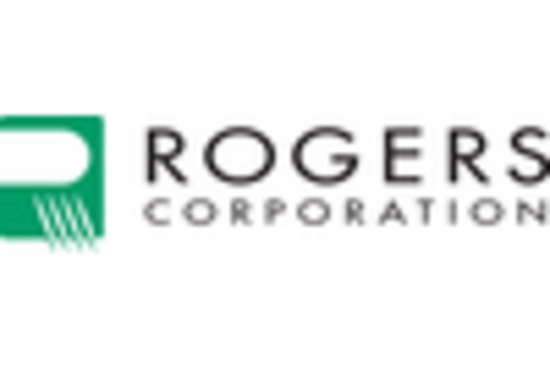Growth in Construction Activities
The Polymer Foam Market is significantly influenced by the growth in construction activities worldwide. With urbanization and infrastructure development on the rise, the demand for insulation materials has escalated. Polymer foams, known for their excellent thermal and acoustic insulation properties, are increasingly utilized in residential and commercial buildings. In 2025, the construction sector is expected to represent around 25% of the market, driven by the need for energy-efficient solutions. The adoption of polymer foams in wall panels, roofing, and flooring applications is indicative of a broader trend towards sustainable building practices. As regulations tighten around energy efficiency, the polymer foam market is poised for continued growth, reflecting the industry's adaptation to modern construction demands.
Innovations in Packaging Solutions
The Polymer Foam Market is witnessing a transformation due to innovations in packaging solutions. As e-commerce continues to expand, the demand for protective packaging materials has surged. Polymer foams offer lightweight, durable, and cushioning properties, making them ideal for safeguarding products during transit. In 2025, the packaging segment is anticipated to account for approximately 20% of the market share. Companies are increasingly adopting polymer foams to enhance product safety while minimizing environmental impact. The shift towards biodegradable and recyclable foam materials aligns with consumer preferences for sustainable packaging. This trend not only supports the growth of the polymer foam market but also encourages manufacturers to innovate and develop new formulations that meet evolving market needs.
Rising Demand in Automotive Sector
The Polymer Foam Market is experiencing a notable surge in demand from the automotive sector. As manufacturers increasingly prioritize lightweight materials to enhance fuel efficiency and reduce emissions, polymer foams are becoming a preferred choice. In 2025, the automotive segment is projected to account for approximately 30% of the total market share. This shift is driven by the need for materials that provide both structural integrity and weight reduction. Additionally, the versatility of polymer foams allows for various applications, including seating, insulation, and soundproofing, further solidifying their role in automotive design. As the industry evolves, the integration of polymer foams is likely to expand, reflecting a broader trend towards sustainable and efficient vehicle production.
Increased Focus on Health and Safety
The Polymer Foam Market is also benefiting from an increased focus on health and safety across various sectors. In industries such as healthcare and consumer goods, the demand for materials that provide cushioning and protection is paramount. Polymer foams are utilized in medical devices, personal protective equipment, and consumer products, ensuring safety and comfort. The healthcare sector, in particular, is projected to contribute significantly to market growth, with an expected share of around 15% in 2025. As regulations around safety standards become more stringent, the polymer foam market is likely to expand, driven by the need for compliant and effective materials. This focus on health and safety not only enhances product performance but also fosters consumer trust in polymer foam applications.
Sustainability and Eco-Friendly Materials
The Polymer Foam Market is increasingly shaped by the demand for sustainability and eco-friendly materials. As consumers and businesses alike become more environmentally conscious, the shift towards sustainable practices is evident. Manufacturers are exploring bio-based and recyclable polymer foams to meet this demand. In 2025, the market for sustainable polymer foams is expected to grow, potentially capturing a significant portion of the overall market. This trend is driven by regulatory pressures and consumer preferences for products that minimize environmental impact. The development of innovative formulations that reduce carbon footprints while maintaining performance characteristics is likely to propel the polymer foam market forward. As sustainability becomes a core value for many companies, the polymer foam industry is positioned to adapt and thrive in this evolving landscape.


















Leave a Comment